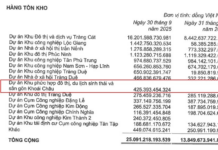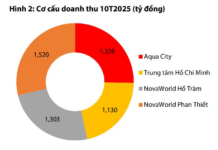One of the biggest challenges in the succession process is the difference in ideas, values, and capabilities between generations. For family businesses, success is often tied to the imprint and reputation of the founder, the leader who has performed well in both the role of owner and manager in the process of building and developing the business. However, in the current context of multiple fluctuations, predecessors not only need to understand the capabilities, ideas, and personal values of the next generation, but also need to respect and reconcile all these factors.
“Succession is a challenging process that requires the participation of both the current generation and the next generation. This process needs to be carried out in a spirit of respect and proactive communication, creating conditions for the next generation to assert their own value and capabilities,” said Mr. Johnathan Ooi, Deputy General Director, Private & Family Business Service Leader, PwC Vietnam.

MANAGING CHANGE CONTRIBUTES TO SUCCESS IN THE SUCCESSION PROCESS
In addition to preparing well in terms of capacity and attitude for both the incumbent and the successor before the succession, appropriate change management also contributes to ensuring the success of the succession and minimizing any unwanted impacts or risks to the business.
Change management in succession involves a series of continuous interactions between parties involved in the succession process – from the incumbent, successor to other members of the family and other stakeholders of the business.
Ms. La Tran Minh, Senior Manager, HR Advisory Services, PwC Vietnam, said: “Like any other transformation project, succession also needs appropriate change management to ensure the cohesion of the organization and minimize possible disruptions at the lowest level”.

Two main factors that can have a significant impact on the succession process are changes in corporate culture and the trust of the management team in the new leader. Firstly, changes in culture can stimulate other changes or lead to a sense of insecurity and resistance to change. Secondly, the decrease in the trust of the management team in the new leader can lead to a series of decisions to leave the company.
MANAGING CHANGE FOR SUCCESSION PLANNING
An effective succession plan facilitates a smooth succession process, minimizing the fear of losing key personnel or disrupting business operations. Organizations that invest time and prepare change management for succession plans will help the transition process take place smoothly in the context of many economic fluctuations. Change management during the succession process can follow a four-step process:
Step 1: Organizational Preparation
This is the most important stage. At this stage, leaders need to assess the nature and orientation of the succession plan. At the same time, leaders also need to consider the potential impact of the successor on the organization, especially on the management team, as this can create internal and external pressures related to leadership change.
Listening to employees and respecting their emotions is considered crucial. In addition, leaders need to minimize any potential concerns and threats, as well as convey positive awareness to individuals and teams throughout the organization by not only creating a caring culture but also truly addressing the issues they raise.
Step 2: Build Implementation Plans
In step 2, the organization needs to establish a change management team tasked with developing a succession plan with possible change options based on feedback from Step 1. Each change option will be examined to choose the most appropriate option by answering questions such as:
Does this option have a clear perspective and a systematic approach?
Does this option support the organization’s goals?
Is the successor compatible with the organization’s culture?
How will the succession plan affect the current organizational structure, how will positions and responsibilities be redistributed, and how will affected individuals react to this change?
Is this option in line with the organization’s resources?
Is this option in line with the personal goals of the business owner?
Step 3: Communicating and Engaging Employees
Communication is a key tool to adjust culture and build commitment to change. The change management team will identify departments and individuals that will be most affected by the new leader, understand the range of emotions they will face when confronted with change, as these emotions will influence their subsequent actions. Change will be best implemented when core messages are regularly, consistently, and timely conveyed and personalized.
The implementation phase of change will not be without conflicts and resistance. Effective dialogue and consultation in the early stages will reduce the level of conflict. Resolving resistance requires identifying the symptoms of resistance and the sources of resistance so as to minimize or properly handle them.
Step 4: Evaluation
Prior to evaluating the succession process, businesses need sufficient time for the successor to fully gain confidence in the new role within the organization. Evaluation will help identify new issues that need to be addressed, such as changes in the organization’s structure or the need to reorganize the management team. The evaluation process can be seen as a continuous cycle: completing one change will drive the next change.





































